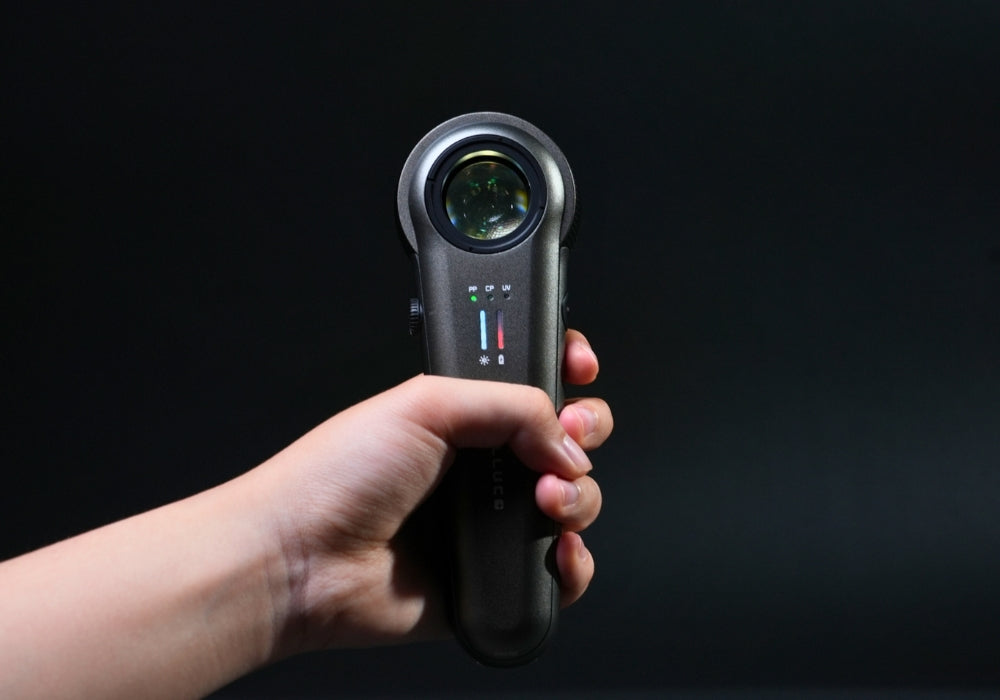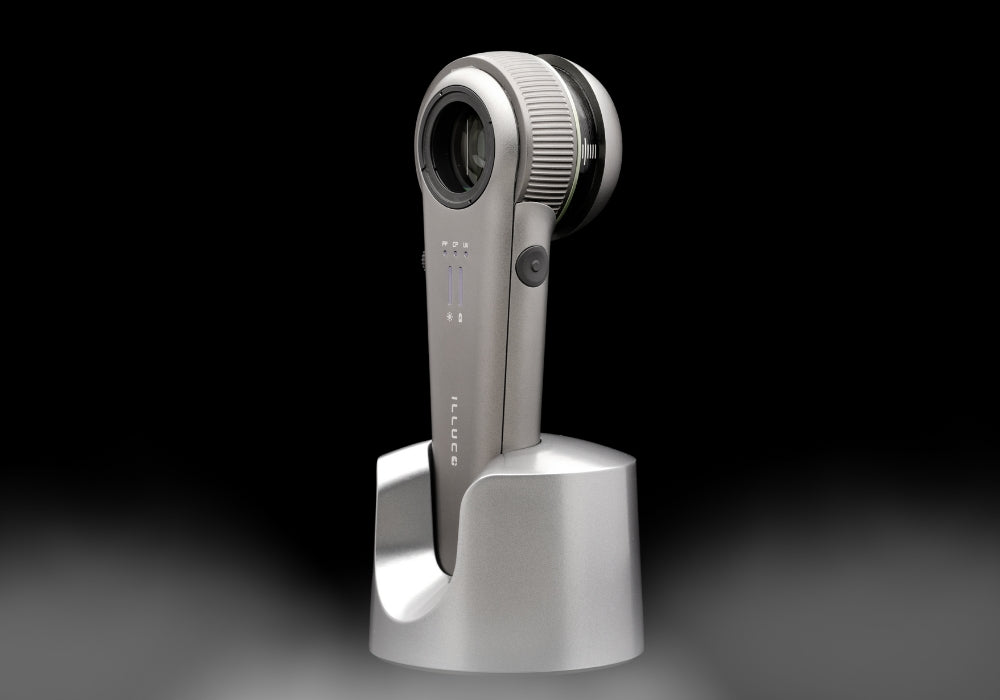Los dermatoscopios actuales están equipados con sistemas ópticos y de iluminación avanzados diseñados para descubrir lo que el ojo desnudo no puede ver, y uno de los más útiles es la iluminación UV , particularmente a la longitud de onda de 365 nm .
¿Qué hace que la luz ultravioleta sea tan especial en dermatología y por qué los médicos recurren a ella para obtener análisis de la piel más precisos?
La ciencia detrás de la iluminación UV
A 365 nanómetros, la luz ultravioleta (UV-A) interactúa con la piel de una manera que provoca que ciertas estructuras, compuestos y microorganismos fluoreszcan, es decir, emitan luz visible cuando se exponen a la radiación UV.
Esta fluorescencia ayuda a revelar detalles subsuperficiales que de otro modo pasarían desapercibidos bajo la luz blanca tradicional o la luz polarizada. Esto permite comprender mejor la salud de la piel, la pigmentación y posibles patologías.
Lo que la luz ultravioleta puede revelar
Trastornos de la pigmentación y daño solar : Bajo la luz ultravioleta, las variaciones en la distribución de la melanina se hacen más visibles, lo que ayuda a los dermatólogos y otros profesionales clínicos a distinguir entre áreas hipopigmentadas e hiperpigmentadas . Esto resulta útil al evaluar el vitiligo, el melasma y los primeros signos de daño solar que aún no son visibles con luz natural.
Infecciones bacterianas y fúngicas : ciertos microorganismos emiten fluorescencia de forma natural a 365 nm:
-
-
Corynebacterium minutissimum (eritrasma) → brillo rojo coral
-
Pseudomonas aeruginosa → verde
-
Malassezia (pitiriasis versicolor) → blanco amarillento
Estas señales visuales hacen de la dermatoscopia UV un método rápido y no invasivo para identificar infecciones o confirmar sospechas clínicas.
-
Corynebacterium minutissimum (eritrasma) → brillo rojo coral
Porfirinas y actividad del acné : En pieles propensas al acné, la luz ultravioleta revela una fluorescencia naranja-rojiza causada por las porfirinas producidas por Cutibacterium acnes. Esto ayuda a los profesionales a evaluar la inflamación, la obstrucción de los poros y la eficacia de los tratamientos en curso.
Visualización de los bordes y la estructura de la lesión: La iluminación UV también puede mejorar el contraste en la morfología de la lesión, haciendo que los bordes sutiles, las redes de pigmento y los patrones vasculares sean más pronunciados, una valiosa ayuda en la detección temprana del melanoma.
¿Por qué 365 nm es la longitud de onda óptima?
No toda la luz ultravioleta es igual. La longitud de onda de 365 nm se considera ideal porque:
-
Maximiza la visibilidad de la fluorescencia para los cromóforos y porfirinas clave de la piel.
-
Produce un mínimo de reflejos y brillo en la piel
- Penetra de forma segura sin dañar la epidermis.
Las longitudes de onda UV más cortas (inferiores a 320 nm) pueden ser dañinas, mientras que las más largas (superiores a 400 nm) pierden contraste diagnóstico, lo que convierte a 365 nm en el punto óptimo para las imágenes clínicas.
Un dermatoscopio diseñado para una visión más profunda
Para los médicos que buscan integrar el diagnóstico UV sin problemas en su flujo de trabajo, el dermatoscopio ILLUCO IDS-9100 ofrece esta capacidad.
Con un aumento óptico de 12x, ofrece una claridad y precisión cromática excepcionales para exámenes detallados. Sus 12 configuraciones de luz (3 modos × 4 niveles de brillo) incluyen luz polarizada cruzada, luz polarizada paralela e iluminación UV a 365 nm, lo que permite una experiencia de visualización personalizada para diferentes afecciones de la piel.
Construido con un cuerpo de metal, película de control de infecciones y una batería recargable de larga duración, el IDS-9100 está diseñado para el uso clínico diario, brindando la precisión y durabilidad que los profesionales necesitan sin compromisos.
La iluminación UV no es solo una característica llamativa; es una herramienta de diagnóstico que mejora la capacidad de ver más allá de la superficie. Ya sea para detectar cambios sutiles de pigmentación, identificar infecciones o evaluar el daño solar, la iluminación UV de 365 nm aporta mayor claridad a la evaluación clínica.
Con dispositivos como el dermatoscopio ILLUCO IDS-9100 , esta tecnología se convierte en una parte cotidiana de la práctica, ayudando a los médicos a realizar evaluaciones más seguras e informadas, longitud de onda a longitud de onda.




Dejar un comentario
Todos los comentarios se revisan antes de su publicación.
Este sitio está protegido por hCaptcha y se aplican la Política de privacidad de hCaptcha y los Términos del servicio.